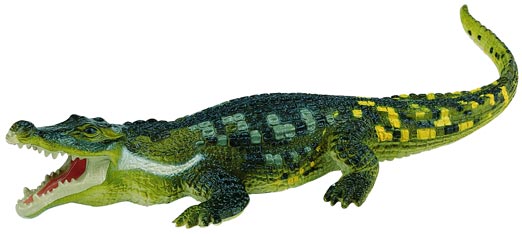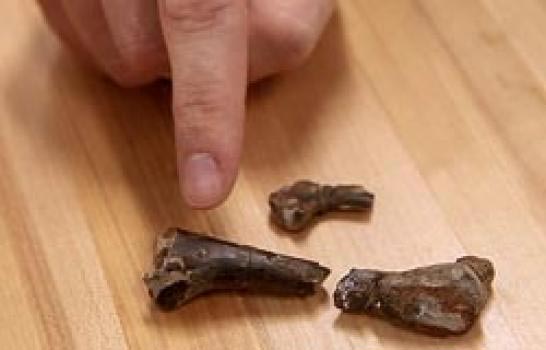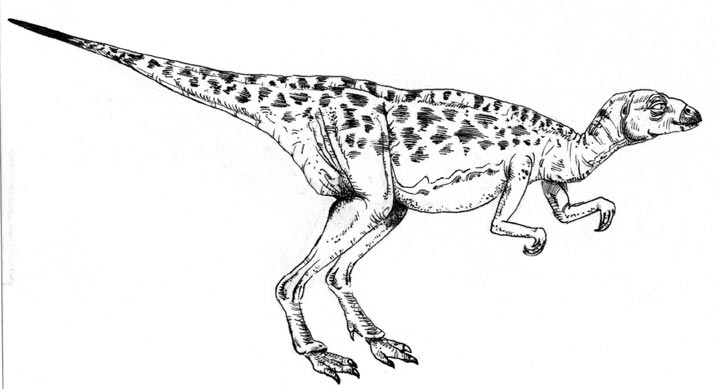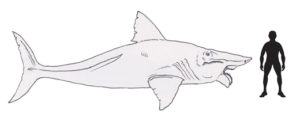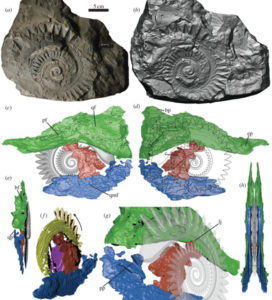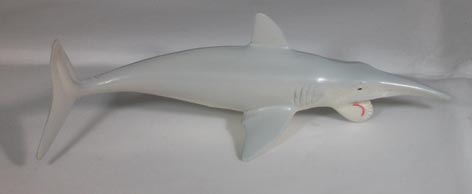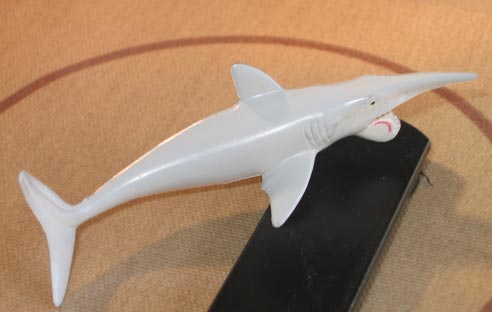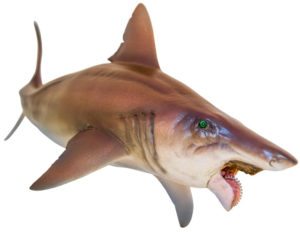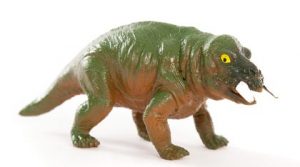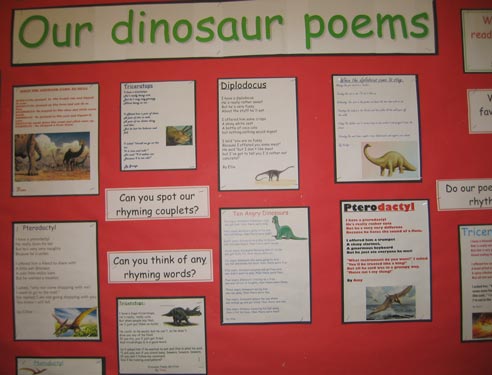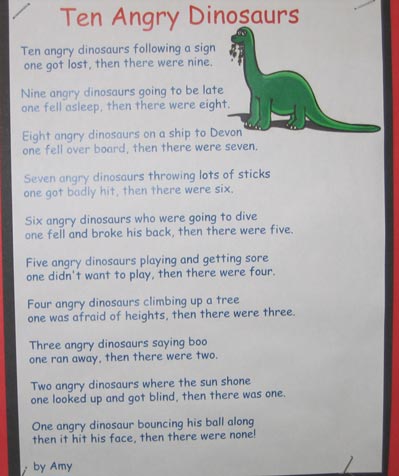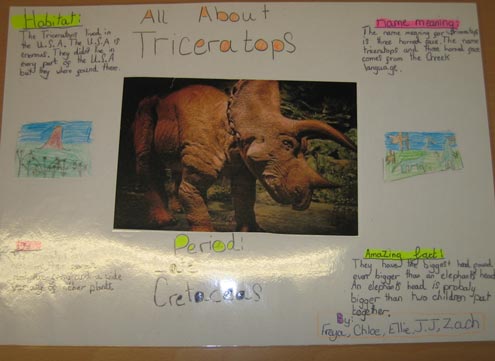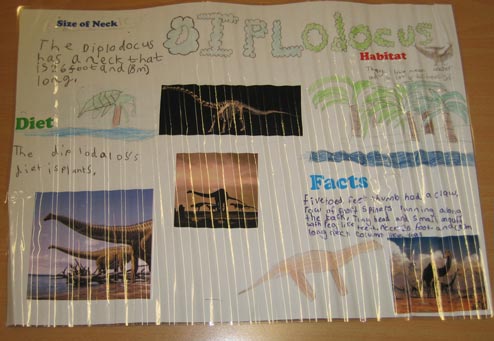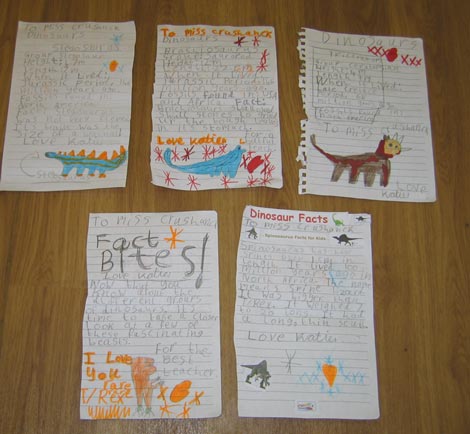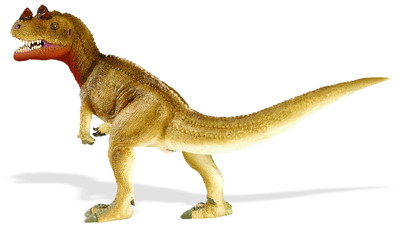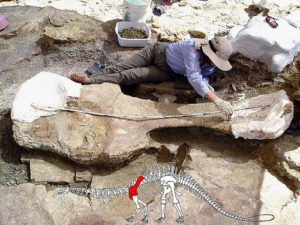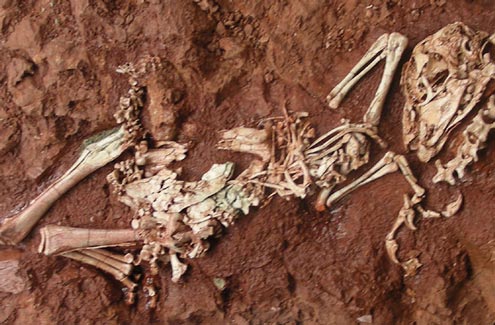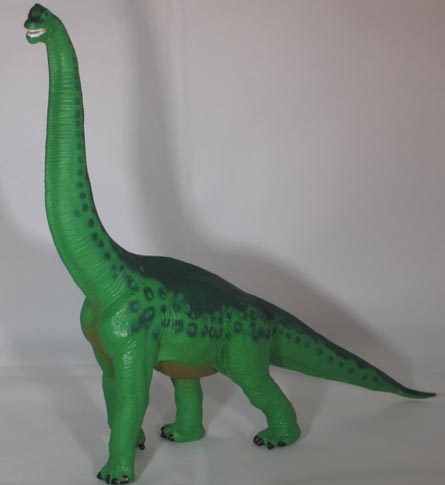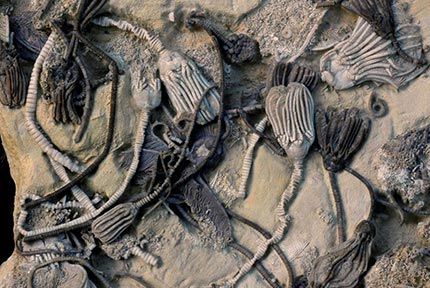Small Crocodyliforms Feeding on Small Dinosaurs
An Insight on the Feeding Behaviour of Small Crocodyliforms – Watch out Hypsilophodonts You are on the Menu!
There have been a number of scientific papers published recently that provide information on the feeding habits of apex crocodyliform predators of the Late Cretaceous such as Deinosuchus. Since modern day crocodiles and alligators attack and kill large mammalian vertebrates and are regarded as apex predators in their environments, it has long been thought that extinct crocodiles such as the twelve-metre-long Deinosuchus were also apex predators. Instead of ambushing mammals when they came to a water source for a drink, (there are no large mammal species known from the Campanian/Maastrichtian fossil record), fearsome reptiles such as Deinosuchus are thought to have tackled dinosaurs.
Even a tyrannosaurid would have had to watch its step close to water with the possibility of being grabbed by a Deinosuchus, a type of crocodile getting on for twice the size of a Nile crocodile.
A Model of the Fearsome Late Cretaceous Predator Deinosuchus
However, very little is known about interactions between predator and prey species when it comes to smaller types of Mesozoic crocodile and smaller types of potential prey. Thanks to some new research by a team of American scientists evidence of a slightly smaller scale predator/prey relationship has been discovered. It looks like small crocodyliform genera or indeed immature specimens of larger taxa may have fed on small types of dinosaur, or possible juveniles and babies of larger species.
Crocodyliforms Feeding on Small Dinosaurs
Writing in the Public Library of Science (Biology) publication Dr Clint Boyd (Department of Geology and Geological Engineering, South Dakota School of Mines and Technology, South Dakota, USA) and his colleagues have outlined research into a number of fragmentary dinosaur bones that show evidence of bite marks from crocodyliforms. Moreover the jumbled and broken bones collected seem to represent a single ornithischian genus and an as yet, unknown genus to boot. It looks like man-sized Cretaceous crocodiles fed on small dinosaurs and the remains of their dinner could well result in the erection of a new genus of hypsilophodontid dinosaur genus.
The Tiny and Fragmentary Dinosaur Bones – Ornithischian Dinosaur
Picture credit: South Dakota School of Mines and Technology
The fragmentary fossils were found in the Upper Cretaceous Kaiparowits Formation at four separate locations along the Grand Staircase Escalante-National Monument in southern Utah, an area famous for its dinosaur fossil finds. The fossils are believed to date from the Campanian faunal stage of the Cretaceous and they are estimated to be around 75 million years old.
During this time in the Late Cretaceous, this region was a lowland plain, criss-crossed by many rivers. The warm, humid climate created ideal conditions for lush plant growth and there was a rich and diverse dinosaur dominated ecosystem, with many types of crocodyliform also present.
Crocodyliforms Feeding
The broken dinosaur bones show bite marks and puncture wounds similar to those found on the bones of mammals that have been fed upon by extant American alligators. The fossil are broken, many have been snapped off at the joints. This could be characteristic of the damage to bones caused by the “crocodile roll” method of feeding, whereby extant crocodiles tear their victims to pieces by grabbing onto the corpse with their strong jaws and then rapidly rotating their bodies.
Studying the Fossil Material
The fossil material represents the bodies of several individual dinosaurs, all roughly 1.2 metres in length. The fossils include elements of the limb bones and vertebrae, along with parts of the skull and the lower jaw. As well as bite marks on the bones, the American research team discovered a broken Crocodyliform tooth embedded in a thigh bone (femur).
It can be speculated that baby ornithopod dinosaurs stayed together in groups when young to give themselves some protection, the nesting site may have been nearby and the two-metre-long crocodyliform predators lay in wait ready to ambush any unwary young herbivore that came too close. The abundance and the close proximity of the fossil finds suggests that these relatively small crocodiles were actively targeting the hypsilophodonts, deliberately congregating close to areas where there were lots of dinosaur juveniles and actively selecting to feed upon these animals.
Although, only very small in size and hardly likely to feature in a major dinosaur exhibit in a museum, these fragments of bone are very significant as they are helping palaeontologists to piece together the complex food chain and diverse ecosystem in this Campanian faunal age environment. It seems that life for a young hypsilophodontid in the Late Cretaceous was particularly hazardous, they would have had to look out for tyrannosaurs and dromaeosaurs as well as having to contend with predatory crocodiles.
A Drawing of What the Hypsilophodontid Dinosaur May Have Looked Like
Picture credit: Everything Dinosaur
The researchers have concluded that the chewed up bones are not the work of a much larger crocodile species. If that had been the case, the bones would simply have been swallowed whole, leaving behind much fewer traces of the dinosaurs that it preyed upon.
Dr Boyd commented:
“It’s not often that you get events from the fossil record that are action-related. While you generally assume there was probably a lot more interaction going on, we didn’t have any of that preserved in the fossil record yet. This is the first time that we have definitive evidence that you had this kind of partitioning, of your smaller crocodyliforms attacking the smaller herbivorous dinosaurs.”
Recently, Rebor have introduced a range of Deinosuchus figures. To view this range of crocodyliforms (whilst stocks last): Rebor Models and Replicas.


